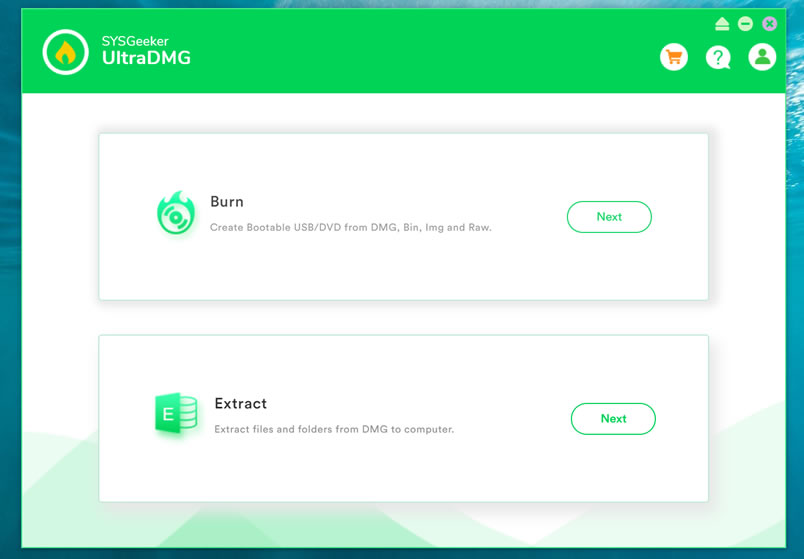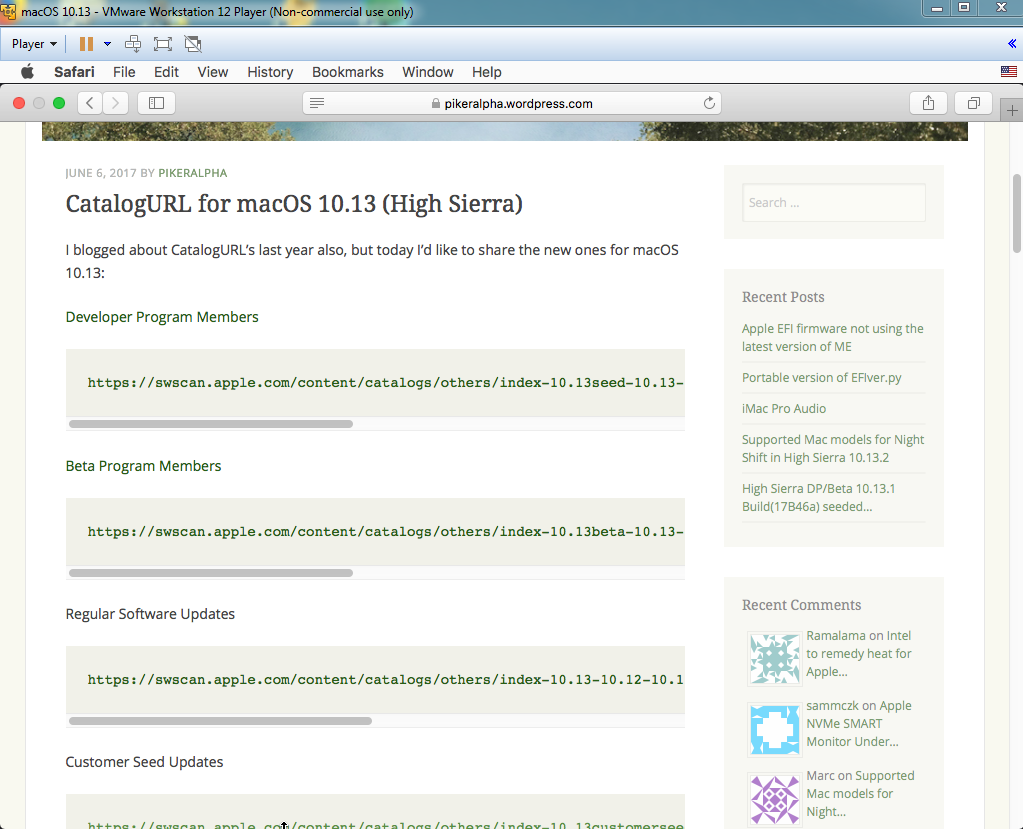- Adobe Acrobat Reader DC is the completely reimagined desktop version of the world’s best PDF solution. And with Adobe Acrobat Reader DC, you can create, export, edit and track PDFs from anywhere - and stay connected to recent files across all your devices.
- What's new in SYSGeeker UltraDMG Version 4.2.9: Supports up to 30+ kinds of USB drives made by SanDisk, Kingston, Toshiba, Samsung and more, whatever they're USB 2.0 or 3.0.
- MacOS High Sierra Patcher, the successor to macOS Sierra Patcher, is an easy-to-use tool that allows anyone to install macOS High Sierra on unsupported Macs.
- With that in mind, the SYSGeeker ISO Burner tool makes it fully compatible with these two boot modes. Extract Anything from ISO Image File: Generally, there are two ways to extract files from an ISO image file, one is mounting an ISO file on a virtual disk and the other one is using a professional tool to get all content from an ISO image.
最新最热 下载排行 UUByte ISO Editor Mac版V4.0.2 Smart Disk Image Utilities Mac版V2.0.7 UUbyte DMG Editor Mac版V1.5.81 SYSGeeker UltraDMG Mac版V4.2.9 macOS Big Sur正式版V11.2.3 macOS 10.16正式版V11.2.3 macOS 11.0正式版V11.2.3 UNetbootin中文版for MacV7.02 diskmaker x 10.15 Mac版V9.0 Diskmaker x 10.11V6.0rc2 Install Disk.
-->This article explains how to deploy and use an ultra disk, for conceptual information about ultra disks, refer to What disk types are available in Azure?.
Azure ultra disks offer high throughput, high IOPS, and consistent low latency disk storage for Azure IaaS virtual machines (VMs). This new offering provides top of the line performance at the same availability levels as our existing disks offerings. One major benefit of ultra disks is the ability to dynamically change the performance of the SSD along with your workloads without the need to restart your VMs. Ultra disks are suited for>
This section covers deploying a virtual machine equipped with an ultra disk as a data disk. It assumes you have familiarity with deploying a virtual machine, if you do not, see our Quickstart: Create a Windows virtual machine in the Azure portal.
Sign in to the Azure portal and navigate to deploy a virtual machine (VM).
Make sure to choose a supported VM size and region.
Select Availability zone in Availability options.
Fill in the remaining entries with selections of your choice.
Select Disks.
On the Disks blade, select Yes for Enable Ultra Disk compatibility.
Select Create and attach a new disk to attach an ultra disk now.
On the Create a new disk blade, enter a name, then select Change size.
Change the Disk SKU to Ultra Disk.
Change the values of Custom disk size (GiB), Disk IOPS, and Disk throughput to ones of your choice.
Select OK in both blades.
Continue with the VM deployment, it will be the same as you would deploy any other VM.
First, determine the VM size to deploy. See the GA scope and limitations section for a list of supported VM sizes.
You must create a VM that is capable of using ultra disks, in order to attach an ultra disk.
Replace or set the $vmname, $rgname, $diskname, $location, $password, $user variables with your own values. Set $zone to the value of your availability zone that you got from the start of this article. Then run the following CLI command to create an ultra enabled VM:

First, determine the VM size to deploy. See the GA scope and limitations section for a list of supported VM sizes.
To use ultra disks, you must create a VM that is capable of using ultra disks. Replace or set the $resourcegroup and $vmName variables with your own values. Set $zone to the value of your availability zone that you got from the start of this article. Then run the following New-AzVm command to create an ultra enabled VM:
Create and attach the disk
Once your VM has been deployed, you can create and attach an ultra disk to it, use the following script:
Deploy an ultra disk - 512 byte sector size
Sign in to the Azure portal, then search for and select Disks.
Select + New to create a new disk.
Select a region that supports ultra disks and select an availability zone, fill in the rest of the values as you desire.
Select Change size.
For Disk SKU select Ultra disk, then fill in the values for the desired performance and select OK.
On the Basics blade, select the Advanced tab.
Select 512 for Logical sector size, then select Review + Create.
First, determine the VM size to deploy. See the GA scope and limitations section for a list of supported VM sizes.
You must create a VM that is capable of using ultra disks, in order to attach an ultra disk.
Replace or set the $vmname, $rgname, $diskname, $location, $password, $user variables with your own values. Set $zone to the value of your availability zone that you got from the start of this article. Then run the following CLI command to create a VM with an ultra disk that has a 512 byte sector size:
First, determine the VM size to deploy. See the GA scope and limitations section for a list of supported VM sizes.
To use ultra disks, you must create a VM that is capable of using ultra disks. Replace or set the $resourcegroup and $vmName variables with your own values. Set $zone to the value of your availability zone that you got from the start of this article. Then run the following New-AzVm command to create an ultra enabled VM:
To create and attach an ultra disk that has a 512 byte sector size, you can use the following script:
Attach an ultra disk
Alternatively, if your existing VM is in a region/availability zone that is capable of using ultra disks, you can make use of ultra disks without having to create a new VM. By enabling ultra disks on your existing VM, then attaching them as data disks. To enable ultra disk compatibility, you must stop the VM. After you stop the VM, you may enable compatibility, then restart the VM. Once compatibility is enabled you can attach an ultra disk:
Navigate to your VM and stop it, wait for it to deallocate.
Once your VM has been deallocated, select Disks.
Select Additional settings.
Select Yes for Enable Ultra Disk compatibility.
Select Save.
Select Create and attach a new disk and fill in a name for your new disk.
For Storage type select Ultra Disk.
Change the values of Size (GiB), Max IOPS, and Max throughput to ones of your choice.
After you are returned to your disk's blade, select Save.
Start your VM again.
Alternatively, if your existing VM is in a region/availability zone that is capable of using ultra disks, you can make use of ultra disks without having to create a new VM.
Enable ultra disk compatibility on an existing VM - CLI
If your VM meets the requirements outlined in GA scope and limitations and is in the appropriate zone for your account, then you can enable ultra disk compatibility on your VM.
To enable ultra disk compatibility, you must stop the VM. After you stop the VM, you may enable compatibility, then restart the VM. Once compatibility is enabled you can attach an ultra disk:
Create an ultra disk - CLI
Now that you have a VM that is capable of attaching ultra disks, you can create and attach an ultra disk to it.
Attach the disk - CLI
Alternatively, if your existing VM is in a region/availability zone that is capable of using ultra disks, you can make use of ultra disks without having to create a new VM.
Enable ultra disk compatibility on an existing VM - PowerShell
If your VM meets the requirements outlined in GA scope and limitations and is in the appropriate zone for your account, then you can enable ultra disk compatibility on your VM.
To enable ultra disk compatibility, you must stop the VM. After you stop the VM, you may enable compatibility, then restart the VM. Once compatibility is enabled you can attach an ultra disk:
Create and attach an ultra disk - PowerShell
Now that you have a VM that is capable of using ultra disks, you can create and attach an ultra disk to it:
Adjust the performance of an ultra disk
Ultra disks offer a unique capability that allows you to adjust their performance. You can make these adjustments from the Azure portal, on the disks themselves.
Navigate to your VM and select Disks.
Select the ultra disk you'd like to modify the performance of.
Select Size + performance and then make your modifications.
Select Save.
Ultra disks offer a unique capability that allows you to adjust their performance, the following command depicts how to use this feature:
Adjust the performance of an ultra disk using PowerShell
Ultra disks have a unique capability that allows you to adjust their performance, the following command is an example that adjusts the performance without having to detach the disk:

Sysgeeker Ultra Dmg Crack
Next steps
Sysgeeker Ultradmg Torrent
- Use Azure ultra disks on Azure Kubernetes Service (preview).
- Migrate log disk to an ultra disk.
